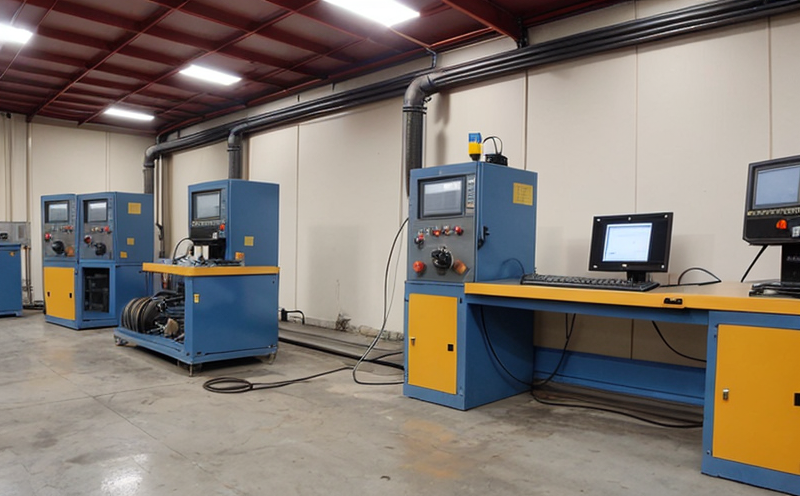Testing and Calibration of Industrial Equipment: A Comprehensive Guide
In todays industrial landscape, equipment performance is critical to ensure efficiency, productivity, and safety. Industrial equipment, such as sensors, meters, pressure gauges, and valves, play a vital role in various industries, including manufacturing, oil and gas, power generation, and more. However, over time, these devices can drift out of calibration, leading to inaccurate readings, decreased performance, and even catastrophic failures.
To mitigate these risks, regular testing and calibration of industrial equipment are essential. In this article, we will delve into the importance of testing and calibration, discuss the types of tests and calibrations required for different equipment, and provide detailed explanations of key concepts in bullet point format.
Why is Testing and Calibration Important?
Testing and calibration are crucial to ensure that industrial equipment operates within acceptable limits. Heres why:
Safety: Inaccurate readings or malfunctioning equipment can lead to safety hazards, including explosions, fires, and even fatalities.
Productivity: Malfunctioning equipment can reduce productivity, leading to decreased output, increased downtime, and higher costs.
Quality Control: Testing and calibration ensure that equipment is functioning correctly, which is essential for maintaining product quality and meeting regulatory requirements.
Compliance: Many industries are regulated by laws and standards that require regular testing and calibration of equipment. Failure to comply can result in fines, penalties, and reputational damage.
Types of Tests and Calibrations
Different types of tests and calibrations are required for various industrial equipment. Heres a breakdown:
Calibration: Calibration involves adjusting the instrument or device to ensure its readings match a known standard value.
Types of calibration:
- Primary calibration: adjusts the instrument to match a primary standard
- Secondary calibration: adjusts the instrument to match a secondary standard
- Field calibration: adjusts the instrument on-site using a reference standard
Testing: Testing involves verifying that equipment meets specific performance criteria.
Types of testing:
- Functional testing: verifies that equipment operates as intended
- Performance testing: verifies that equipment meets specified performance requirements
- Diagnostic testing: identifies and diagnoses faults or malfunctions in equipment
Detailed Explanation of Key Concepts
Here are two detailed paragraphs with explanations in bullet point format:
Understanding Calibration Uncertainty: Calibration uncertainty is a critical aspect of calibration. It refers to the range within which the calibrated instruments readings may deviate from the true value. Understanding calibration uncertainty is essential for ensuring that equipment meets performance requirements.
Key Points:
Calibration uncertainty is typically expressed as a percentage or absolute value
Calibration uncertainty depends on factors such as instrument design, operating conditions, and calibration method
Calibration uncertainty can be minimized by using high-quality reference standards and following proper calibration procedures
Calibration vs. Verification: While often used interchangeably, calibration and verification have distinct meanings. Calibration adjusts the instrument to match a known standard value, whereas verification ensures that equipment meets performance requirements.
Key Points:
Calibration is an adjustment process
Verification is a testing process
Calibration may not always be necessary; verification can confirm that equipment meets specifications
QA Section
Here are some frequently asked questions and their answers:
Q1. What is the difference between calibration and maintenance?
A1. Calibration involves adjusting the instrument to match a known standard value, whereas maintenance refers to regular upkeep of equipment to ensure it operates correctly.
Q2. How often should industrial equipment be tested and calibrated?
A2. Testing and calibration frequencies vary depending on equipment type, usage, and industry regulations. Typically, equipment is tested and calibrated annually or every 6-12 months.
Q3. What are the consequences of ignoring testing and calibration requirements?
A3. Ignoring testing and calibration requirements can lead to inaccurate readings, decreased performance, and even catastrophic failures, resulting in safety hazards, productivity losses, and reputational damage.
Q4. Can I calibrate equipment myself?
A4. While its possible to perform basic maintenance tasks yourself, advanced calibration procedures typically require specialized training and expertise. Its recommended to engage a qualified technician or third-party service provider for calibration.
Q5. What is the difference between primary and secondary calibration?
A5. Primary calibration adjusts the instrument to match a primary standard (e.g., a National Institute of Standards and Technology (NIST) standard), whereas secondary calibration adjusts the instrument to match a secondary standard (e.g., an instrument calibrated against a primary standard).
Q6. Can I use multiple testing methods for a single piece of equipment?
A6. Yes, its common to employ multiple testing methods to verify equipment performance. For example, functional testing may be performed on-site, followed by laboratory-based calibration and verification.
Q7. What is the importance of proper documentation during testing and calibration?
A7. Proper documentation ensures that test results, calibration data, and maintenance records are accurately recorded and easily accessible for future reference or regulatory compliance.
Q8. Can I use online resources or tutorials to learn about testing and calibration procedures?
A8. While online resources can provide general guidance, its essential to consult industry-specific standards, regulations, and guidelines, as well as engage with experienced technicians or third-party service providers for advanced training and expertise.
In conclusion, testing and calibration of industrial equipment are critical to ensure accuracy, efficiency, safety, and compliance in various industries. Understanding the importance of these processes, types of tests and calibrations, and key concepts is essential for ensuring that equipment operates within acceptable limits.

































